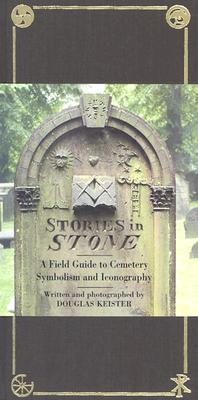Certain symbols abound in modern Western culture that are instantly recognizable: the cross signifies Christianity, the six-pointed Star of David is revered by Jews, the golden arches frequently means it's time for lunch. Other symbols, however, require a bit of decoding-particularly those found in cemeteries.
Cemeteries are virtual encyclopedias of symbolism. Engravings on tombstones, mausoleums and memorials tell us just about everything there is to know about a person- date of birth and death as well as religion, ethnicity, occupation, community interests, and much more. In the fascinating new book Stories in Stone: The Complete Guide to Cemetery Symbolism by noted author Douglas Keister, the secrets of cemetery symbolism are finally revealed. For instance, did you know that it is quite rare to see a sunflower on a tombstone? Did you know that the human foot symbolizes humility and service since it consistently touches the earth? Or the humble sheaf of wheat-while it is often used to denote someone who has lived a long and fruitful life, do you know other meanings it might carry?
Stories in Stone provides history along with images of a wide variety of common and not-so-common cemetery symbols, and offers an in-depth examination of stone relics and the personal and intimate details they display-flora and fauna, religious icons, society symbols, and final impressions of how the deceased wished to be remembered. Douglas Keister has created a practical field guide that is compact and portable, perfect for those interested in family histories and genealogical research, and is the only book of its kind that unlocks the language of symbols in a comprehensive and easy-to-understand manner.
Douglas Keister has photographed fourteen award-winning, critically acclaimed books (including Red Tile Style: America's Spanish Revival Architecture, The Bungalow: America's Arts & Crafts Home, and Storybook Style: America's Whimsical Homes of the Twenties) earning him the title America's most noted photographer of historic architecture. He also writes and illustrates magazine articles and contributes photographs and essays to other books, calendars, posters, and greeting cards. Doug lives in Chico, California, and travels frequently to photograph and lecture on historic architecture and photography.
